Bald eagles, the national bird of the United States, came perilously close to becoming extinct here, but are now making a comeback! Let's look at the data with a SAS map!
When I was growing up in the 1970s & 80s here in North Carolina, I spent a lot of time outdoors but never once saw an eagle. That's because eagles were basically extinct in NC during those years. What happened to the eagles? The main factor was the widespread use of DDT as an insecticide after WWII ... and one of the side-effects was egg shell thinning, and the eagle eggs broke before they could hatch. DDT was banned in the US in 1972, and the eagles have been making a dramatic comeback since then.
And for some proof of this comeback, here's a picture of a bald eagle that my friend Joe took at Jordan Lake (about 20 miles from the SAS headquarters)...
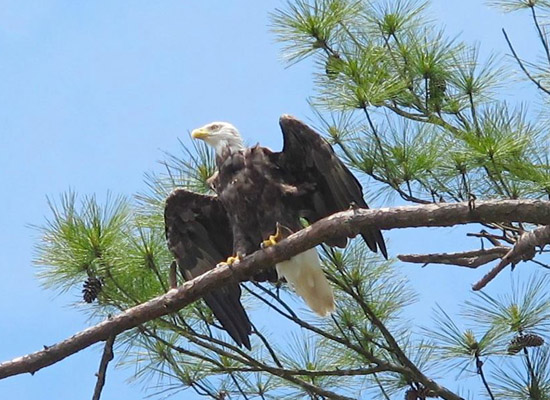
While doing a bit of web research about eagles, I found a map on biologicaldiversity.org that showed the number of eagles in each state, and the map had drill-down links to detailed time series graphs showing the eagle population comeback in each state. Their map contained a lot of good/interesting data, but I had some ideas for making it better.
For example, rather than making each state the same color, it would be even better to shade the states based on the number of eagles. Also, the drill-down links in their map weren't in the right locations (they all seem to be shifted over to the left, and didn't line up with the correct states).
So I created my own SAS version of the map using gradient shading, and SAS makes sure the drill-down areas are exactly lined up with the state borders. (I also added hover-text in addition to the drill-down!) Below is a snapshot of my map - click it to see the interactive version with hover-text and drill-downs. Be sure to click on a few of the states to see how the eagle populations have recovered in each state, over time!
Notice that Florida has one of the largest eagle populations, and it is therefore no surprise that my friend Jennifer took this picture of an eagle in Naples Florida - that's quite a nest, eh!?!
When was the first time you saw an eagle? (feel free to share in a comment!)
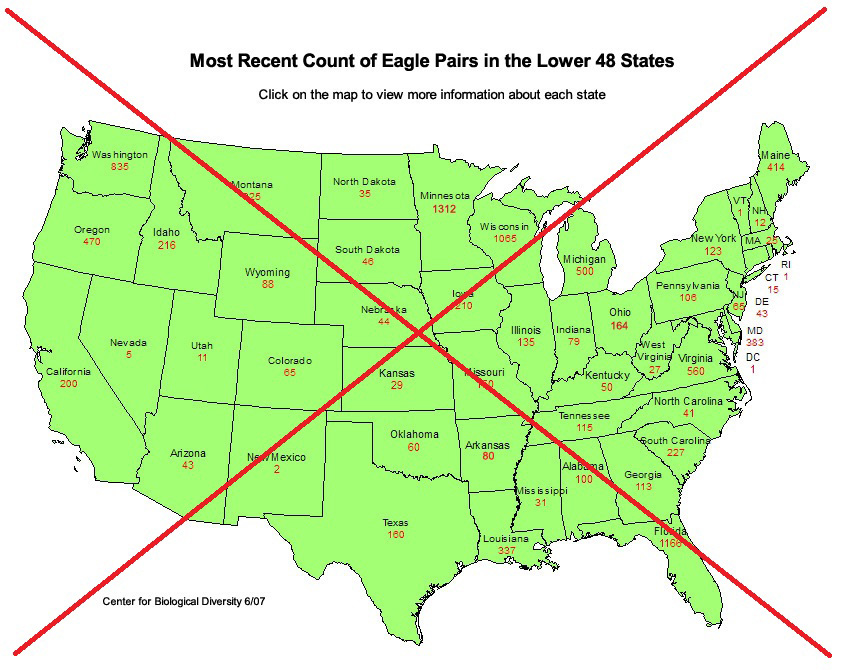
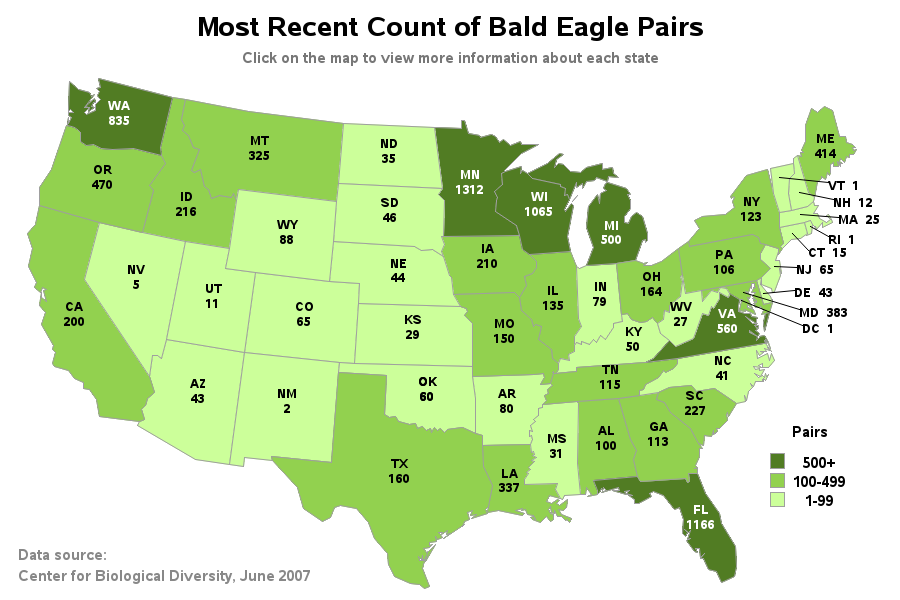
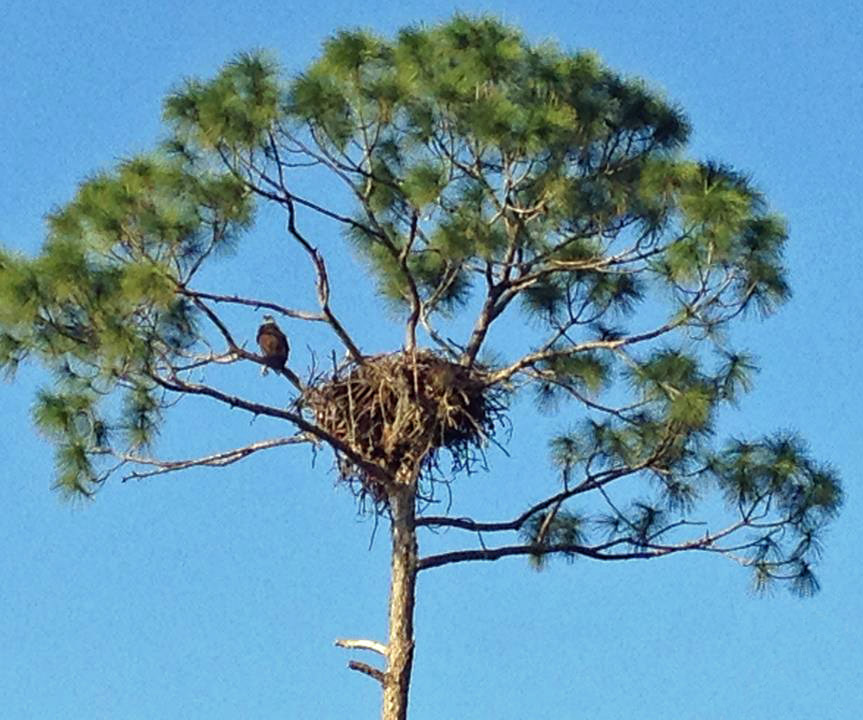

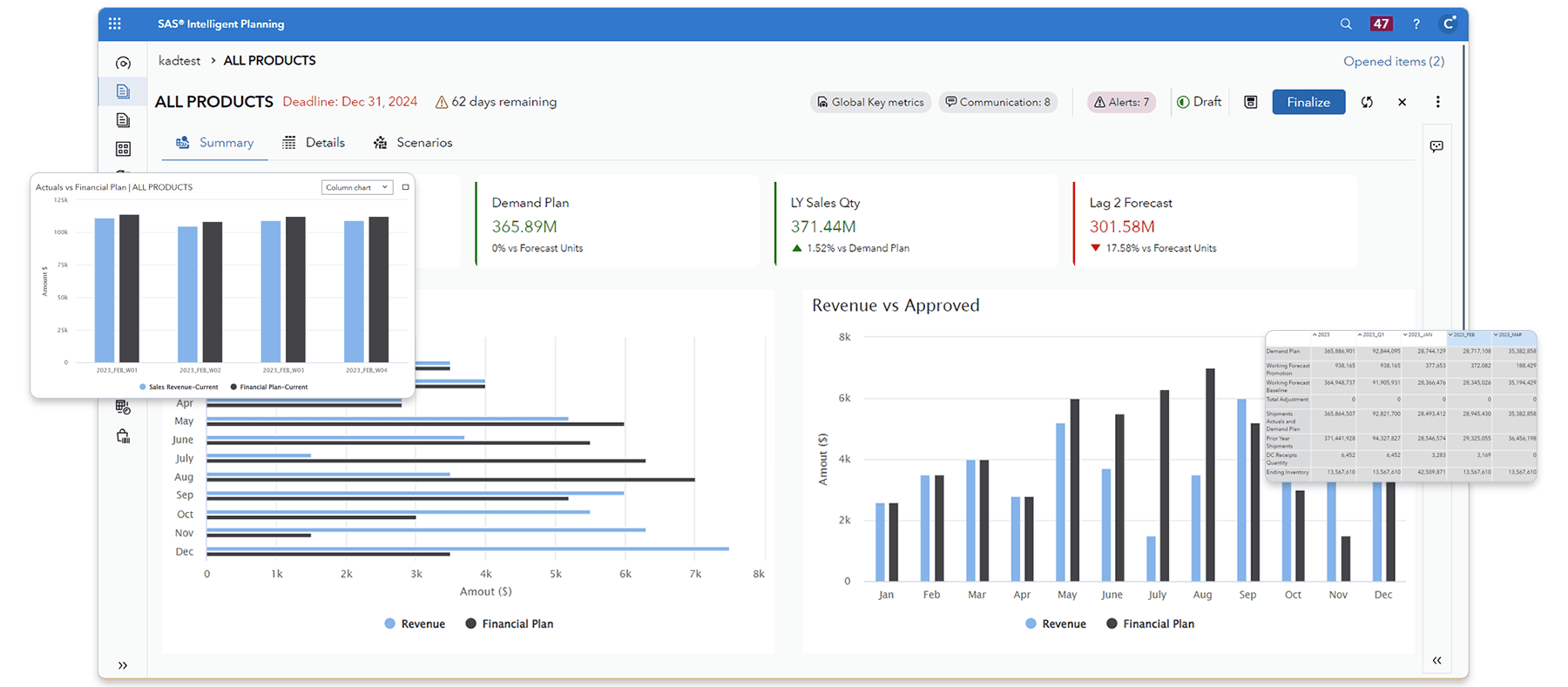





15 Comments
I grew up and live in Minnesota. I remember seeing the trucks spraying ddt in the neighborhood. I saw my 1st bald eagle in the Boundary Waters in the 70's. Now, here in St. Paul Mn, you can see 4 nests in one 2-3 mile stretch of the Mississippi River downtown. I vacation in Florida and was shocked and emotionally pleased with how many eagles and nests I saw. Awesome!
Your comment makes me want to go out eagle-watching this afternoon! :)
Hey Robert! After retiring I jumped across the country to Washington. Instead of seeing eagles at Jordan Lake, I now see them soaring over my house which is in sight of a large lake.
Interesting info - even for a Norwegian ...
But what is the reason for the slight displacements of the 1991-2003 labels in the bar graphs?
I wondered about that odd label placement on biologicaldiversity.org's bar charts also! I was wanting to make my own bar charts, but I didn't have the actual data values (so I just drilled-down to their charts).
Great news about the eagles. Would you be willing to share the SAS code also?
Here's a link to the SAS code: http://robslink.com/SAS/democd80/bald_eagle_map_info.htm
Thanks for another excellent and informative post, Robert!
Just wanted to add some information about the Bald Eagle population/habitat in Alaska, which is not shown on your map of "the outside," which is how Alaskans refer to the "lower 48" states. There is a substantial and growing population of Bald Eagles in that State, too. Some of my most memorable experiences during my ten (so far) trips to Alaska have been observing Bald Eagles there nest, hunt for food, or just perch themselves on the tops of buildings or light poles.
See this site from the Alaska Dept of Fish and Game: http://www.adfg.alaska.gov/index.cfm?adfg=baldeagle.main
Yes, I've heard that Alaska is a *very* good place to see bald eagles!
Saw a few bald eagles in Florida this year, on an excellent swamp tour I would highly recommend: http://www.kissimmeeswamptours.com/. They said Florida was second only to Alaska in eagle population. From your map, it looks like they've been passed by Minnesota! Sadly, I can see that my chances of ever seeing one in my home state of Rhode Island aren't that good.
Another reason for the bald eagles prominence could be the introduction of The Bald Eagle Act which protects the bird and its habitat, https://en.m.wikipedia.org/wiki/Bald_and_Golden_Eagle_Protection_Act The Australia Koala Foundation are trying to get a similar act in Australia. Currently the koala is protected but not their habitat. https://www.savethekoala.com/our-work/koala-protection-act
I'm glad they're protected now. I was quite surprised to see on the Wikipedia page that bald eagles had actually been hunted (intentionally shot) in the distant past ...
"Other factors in bald eagle population reductions were a widespread loss of suitable habitat, as well as both legal and illegal shooting. In 1930 a New York City ornithologist wrote that in the state of Alaska in the previous 12 years approximately 70,000 bald eagles had been shot. Many of the hunters killed the bald eagles under the long-held beliefs that bald eagles grabbed young lambs and even children with their talons"
My parents have really enjoyed watching the Decorah (IA) Eagles webcam the past couple of springs.
http://www.ustream.tv/decoraheagles
There's a place on the Missouri river about 60 miles from my hometown where as you're driving across the bridge you can frequently see >20 eagles soaring over the river (and fishing!) and roosting in the trees. It's absolutely stunning.
Neat webcam site!
I loved the article and the graphs! Thanks for bringing attention to this wonderful progress. It seems eagle populations have continued to grow substantially in NC. A few years ago I counted over 30 bald eagles in one single day at Jordan Lake. During my frequent boating trips, I tend to see at least one wherever I boat. I've sited eagles in the Triangle area at Crabtree, Raleigh, Falls, Sharon Harris, and Jordan Lakes as well as at coastal rivers and the inter-coastal waterway.